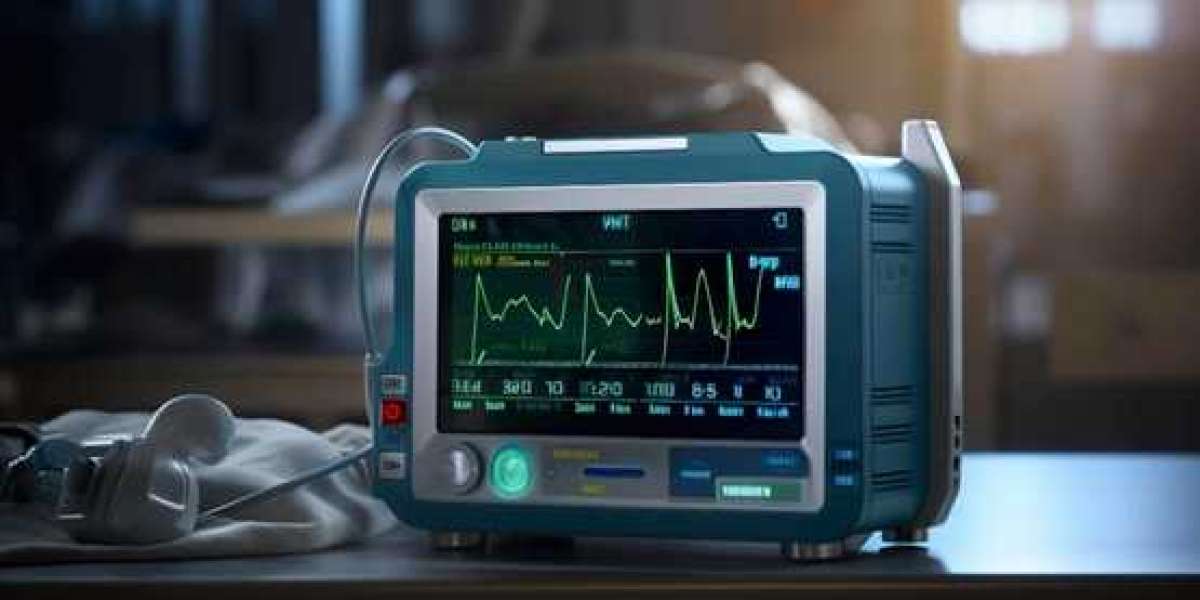Discover the growth, trends, and future insights of the atrial fibrillation devices market. Learn about advancements, challenges, and regional analysis.
Atrial fibrillation (AF) is one of the most common cardiac arrhythmias globally, affecting millions of people every year. The growing prevalence of AF has driven the demand for advanced medical devices aimed at monitoring, managing, and treating this condition. The Atrial Fibrillation Devices Market has seen rapid expansion, with significant innovations improving the quality of life for patients and reducing the risk of stroke. In this article, we’ll explore the trends, growth opportunities, and future outlook of the atrial fibrillation devices market.
What Is Atrial Fibrillation?
Understanding AF: The Basics
Atrial fibrillation is an irregular and often rapid heart rate that can increase the risk of stroke, heart failure, and other heart-related complications. It occurs when the upper chambers of the heart (the atria) beat out of coordination with the lower chambers (the ventricles).
Symptoms of Atrial Fibrillation
- Palpitations (a sensation of a racing or irregular heartbeat)
- Weakness
- Fatigue
- Dizziness
- Shortness of breath
- Chest pain
Overview of the Atrial Fibrillation Devices Market
Why Is the Market Growing?
The atrial fibrillation devices market is expanding primarily due to the increasing prevalence of heart diseases, aging populations, and advancements in medical technology. As AF is a major risk factor for strokes, the demand for reliable and efficient devices to manage the condition is on the rise.
Types of Atrial Fibrillation Devices
- Cardiac Monitors: Devices that track the heart's activity over time.
- Catheter Ablation Devices: Used to destroy the tissue causing abnormal heart rhythms.
- Pacemakers: Help regulate the heart's rhythm.
- Implantable Cardioverter Defibrillators (ICDs): Devices that monitor heart rhythms and deliver shocks to restore a normal rhythm.
- Wearable Devices: Smartwatches and other portable monitors capable of detecting AF.
Technological Advancements
Recent technological developments have brought a wave of innovation in the design and functionality of these devices. For example, wearable AF detection devices powered by artificial intelligence (AI) and machine learning algorithms are improving early detection.
Major Trends in the Atrial Fibrillation Devices Market
Rise of Non-Invasive Monitoring
Non-invasive monitoring devices, such as wearables, are making it easier for patients to track their heart health in real-time without the need for frequent hospital visits. The rise of these smart devices is helping doctors and patients detect AF earlier, leading to better management.
Integration of AI and Machine Learning
AI and machine learning are transforming the AF devices market by enabling faster and more accurate diagnosis. These technologies are also being integrated into the treatment process to customize and optimize therapies for individual patients.
Miniaturization of Devices
Smaller, more discreet devices are now available, making it easier for patients to manage their condition without feeling self-conscious. Implantable monitors and pacemakers, for instance, are becoming smaller, but with improved battery life and functionality.
Growing Preference for Ambulatory Devices
There is a shift towards the use of ambulatory (mobile) devices, which allow continuous monitoring outside of a clinical setting. These devices reduce the need for hospitalization and enable earlier detection of AF episodes.
Market Segmentation and Regional Analysis
Market Segmentation
The AF devices market is segmented based on:
- Device Type: Monitoring devices, therapeutic devices, and wearable devices.
- End-User: Hospitals, clinics, ambulatory surgical centers, and home care settings.
- Region: North America, Europe, Asia-Pacific, and the rest of the world.
Regional Insights
- North America dominates the market due to high healthcare spending and the availability of advanced medical infrastructure.
- Europe is witnessing significant growth due to rising awareness and favorable government initiatives.
- Asia-Pacific is expected to see the fastest growth, driven by an increasing aging population and growing healthcare investments.
Challenges in the Atrial Fibrillation Devices Market
Regulatory Hurdles
One of the major challenges in the market is obtaining regulatory approvals. Devices must undergo rigorous testing and clinical trials before reaching the market, delaying the time-to-market for new innovations.
High Costs
The cost of advanced AF devices can be prohibitive for many patients, especially in developing countries. Although prices are expected to decrease over time, the high upfront costs are a barrier to widespread adoption.
Future Outlook of the Atrial Fibrillation Devices Market
Increased Focus on Preventive Care
The future of the atrial fibrillation devices market will likely focus on preventive care. As healthcare systems worldwide shift towards a preventive model, devices that can detect AF early and offer predictive analytics will become more prevalent.
Personalized Treatment Plans
As data from AI-enabled devices becomes more detailed and sophisticated, we will see a rise in personalized treatment plans. These tailored therapies will help reduce the frequency and severity of AF episodes for individual patients.
Emerging Markets
Emerging markets such as India and China hold significant growth potential. With large populations and a growing middle class, these regions are expected to become key players in the global atrial fibrillation devices market.
Conclusion
In conclusion, the atrial fibrillation devices market is poised for significant growth in the coming years, driven by technological advancements, increasing awareness, and the global rise in cardiovascular diseases. While challenges such as regulatory hurdles and high costs remain, the market's future looks promising, especially with the integration of AI and machine learning in device development. As these devices continue to improve in terms of functionality and accessibility, patients will benefit from more accurate diagnosis, effective treatment, and a better quality of life.
FAQs
1. What are the most common devices used to treat atrial fibrillation?
Common devices include pacemakers, cardiac monitors, catheter ablation devices, and wearable heart monitors.
2. How do wearable AF devices work?
Wearable AF devices use sensors to monitor heart activity and detect irregular rhythms in real-time. Some devices also incorporate AI for better accuracy.
3. Are AF devices covered by insurance?
In many countries, AF devices such as pacemakers and ICDs are covered by insurance, but coverage for wearable devices may vary.
4. Can atrial fibrillation be cured with these devices?
While devices can help manage and reduce symptoms, they may not cure AF entirely. Catheter ablation can be effective in some cases, but ongoing management is often required.
5. What is the future of AF devices?
The future of AF devices includes AI-driven technologies, miniaturized devices, and personalized treatment plans, improving overall patient care.
Atrial fibrillation (AF) is one of the most common cardiac arrhythmias globally, affecting millions of people every year. The growing prevalence of AF has driven the demand for advanced medical devices aimed at monitoring, managing, and treating this condition. The Atrial Fibrillation Devices Market has seen rapid expansion, with significant innovations improving the quality of life for patients and reducing the risk of stroke. In this article, we’ll explore the trends, growth opportunities, and future outlook of the atrial fibrillation devices market.
What Is Atrial Fibrillation?
Understanding AF: The Basics
Atrial fibrillation is an irregular and often rapid heart rate that can increase the risk of stroke, heart failure, and other heart-related complications. It occurs when the upper chambers of the heart (the atria) beat out of coordination with the lower chambers (the ventricles).
Symptoms of Atrial Fibrillation
- Palpitations (a sensation of a racing or irregular heartbeat)
- Weakness
- Fatigue
- Dizziness
- Shortness of breath
- Chest pain
Overview of the Atrial Fibrillation Devices Market
Why Is the Market Growing?
The atrial fibrillation devices market is expanding primarily due to the increasing prevalence of heart diseases, aging populations, and advancements in medical technology. As AF is a major risk factor for strokes, the demand for reliable and efficient devices to manage the condition is on the rise.
Types of Atrial Fibrillation Devices
- Cardiac Monitors: Devices that track the heart's activity over time.
- Catheter Ablation Devices: Used to destroy the tissue causing abnormal heart rhythms.
- Pacemakers: Help regulate the heart's rhythm.
- Implantable Cardioverter Defibrillators (ICDs): Devices that monitor heart rhythms and deliver shocks to restore a normal rhythm.
- Wearable Devices: Smartwatches and other portable monitors capable of detecting AF.
Technological Advancements
Recent technological developments have brought a wave of innovation in the design and functionality of these devices. For example, wearable AF detection devices powered by artificial intelligence (AI) and machine learning algorithms are improving early detection.
Major Trends in the Atrial Fibrillation Devices Market
Rise of Non-Invasive Monitoring
Non-invasive monitoring devices, such as wearables, are making it easier for patients to track their heart health in real-time without the need for frequent hospital visits. The rise of these smart devices is helping doctors and patients detect AF earlier, leading to better management.
Integration of AI and Machine Learning
AI and machine learning are transforming the AF devices market by enabling faster and more accurate diagnosis. These technologies are also being integrated into the treatment process to customize and optimize therapies for individual patients.
Miniaturization of Devices
Smaller, more discreet devices are now available, making it easier for patients to manage their condition without feeling self-conscious. Implantable monitors and pacemakers, for instance, are becoming smaller, but with improved battery life and functionality.
Growing Preference for Ambulatory Devices
There is a shift towards the use of ambulatory (mobile) devices, which allow continuous monitoring outside of a clinical setting. These devices reduce the need for hospitalization and enable earlier detection of AF episodes.
Market Segmentation and Regional Analysis
Market Segmentation
The AF devices market is segmented based on:
- Device Type: Monitoring devices, therapeutic devices, and wearable devices.
- End-User: Hospitals, clinics, ambulatory surgical centers, and home care settings.
- Region: North America, Europe, Asia-Pacific, and the rest of the world.
Regional Insights
- North America dominates the market due to high healthcare spending and the availability of advanced medical infrastructure.
- Europe is witnessing significant growth due to rising awareness and favorable government initiatives.
- Asia-Pacific is expected to see the fastest growth, driven by an increasing aging population and growing healthcare investments.
Challenges in the Atrial Fibrillation Devices Market
Regulatory Hurdles
One of the major challenges in the market is obtaining regulatory approvals. Devices must undergo rigorous testing and clinical trials before reaching the market, delaying the time-to-market for new innovations.
High Costs
The cost of advanced AF devices can be prohibitive for many patients, especially in developing countries. Although prices are expected to decrease over time, the high upfront costs are a barrier to widespread adoption.
Future Outlook of the Atrial Fibrillation Devices Market
Increased Focus on Preventive Care
The future of the atrial fibrillation devices market will likely focus on preventive care. As healthcare systems worldwide shift towards a preventive model, devices that can detect AF early and offer predictive analytics will become more prevalent.
Personalized Treatment Plans
As data from AI-enabled devices becomes more detailed and sophisticated, we will see a rise in personalized treatment plans. These tailored therapies will help reduce the frequency and severity of AF episodes for individual patients.
Emerging Markets
Emerging markets such as India and China hold significant growth potential. With large populations and a growing middle class, these regions are expected to become key players in the global atrial fibrillation devices market.
Conclusion
In conclusion, the atrial fibrillation devices market is poised for significant growth in the coming years, driven by technological advancements, increasing awareness, and the global rise in cardiovascular diseases. While challenges such as regulatory hurdles and high costs remain, the market's future looks promising, especially with the integration of AI and machine learning in device development. As these devices continue to improve in terms of functionality and accessibility, patients will benefit from more accurate diagnosis, effective treatment, and a better quality of life.
FAQs
1. What are the most common devices used to treat atrial fibrillation?
Common devices include pacemakers, cardiac monitors, catheter ablation devices, and wearable heart monitors.
2. How do wearable AF devices work?
Wearable AF devices use sensors to monitor heart activity and detect irregular rhythms in real-time. Some devices also incorporate AI for better accuracy.
3. Are AF devices covered by insurance?
In many countries, AF devices such as pacemakers and ICDs are covered by insurance, but coverage for wearable devices may vary.
4. Can atrial fibrillation be cured with these devices?
While devices can help manage and reduce symptoms, they may not cure AF entirely. Catheter ablation can be effective in some cases, but ongoing management is often required.
5. What is the future of AF devices?
The future of AF devices includes AI-driven technologies, miniaturized devices, and personalized treatment plans, improving overall patient care.








